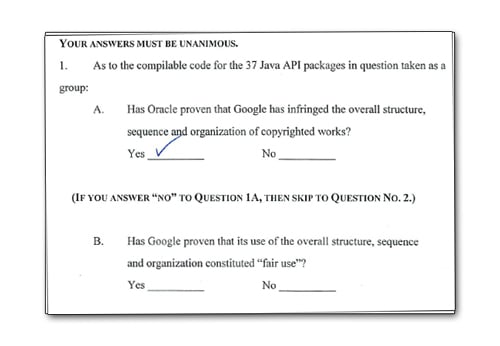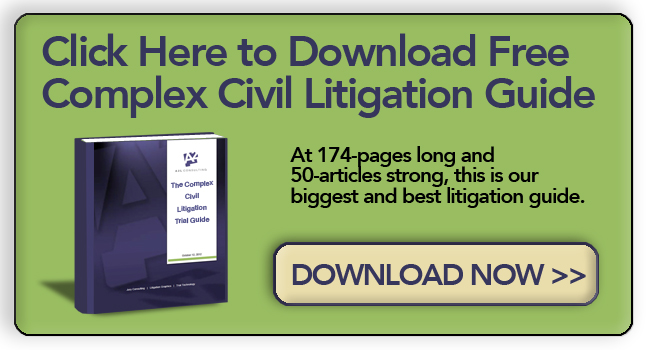1. It includes vocabulary that exceeds three syllables.
Have you ever stood in line at a supermarket and caught snippets of conversations filled with complex vocabulary like "notwithstanding," "inasmuch," or "but for"? These are not everyday words for lay jurors. When a verdict form is packed with legal jargon, jurors may get fixated on the few words they do understand, giving them undue importance. This can lead to incorrect interpretations of the questions and instructions. To prevent this, it's best to have a non-lawyer identify any unfamiliar terms and provide definitions or paraphrase them into simpler language. Unless confusion is your intention, it's crucial to ensure clarity in the language used.
2. It is more convenient for them to halt the process prematurely by ruling against you rather than in your favor.
Choosing to answer question 1 with a "No" will bring the process to a screeching halt. On the other hand, answering "Yes" will open the floodgates to a series of ten more questions, prolonging the deliberation process. This becomes problematic if answering "No" leads to an unfavorable outcome. It is worth exploring alternative methods of structuring or sequencing the questions, if feasible, to avoid this potential roadblock.
3. It poses questions that deviate from the manner in which you presented your case.
You may have executed a brilliant presentation, captivating the jury with your compelling evidence, a powerful opening, and a persuasive closing. However, there is one crucial issue: how does all of this connect with the verdict questions? If you failed to show the jury the verdict form and neglected to align your evidence and arguments with the specific wording of the special verdict questions, you leave them in the dark. Without the necessary tools, unless they are legal professionals themselves, they will struggle to grasp the true meaning behind terms like "bad faith" or "breach of fiduciary duty." Consequently, they will resort to creating their own interpretations of the questions, introducing a significant element of risk. To prevent your case presentation and the questions from becoming ships passing in the night, it is imperative to take control of the narrative and ensure that your presentation seamlessly aligns with the language used in the likely verdict questions.
4. It contains an excessive or insufficient number of categories to determine accountability or grant financial compensation.
Grouping parties together can make it challenging to determine their individual responsibilities, if any, and can also make it easier to award money when asked as a collective question. For example, a question like "Which of the following defendants, if any, breached the agreement with Plaintiff?" may cause jurors to focus on the alleged breach rather than on each individual defendant.
On the other hand, separating out the issues and defendants, especially when there are many, can make it difficult for jurors to keep track of who did what. This places a burden on both the plaintiff(s) and the jurors. To address this, one strategy for the defense would be to ask a question for each defendant, such as "Did Plaintiff prove, by a preponderance of the evidence, that defendant A breached its agreement with the Plaintiff? If so, did Plaintiff prove its economic damages against defendant A?" This approach forces jurors to scrutinize the actions of each defendant individually, making it harder for them to respond in a generalized manner.
When it comes to damages, the more blank spaces jurors are presented with, the higher the likelihood that they will fill them in with some amount of money. This can be advantageous for plaintiffs, but there is a point where jurors may reach exhaustion if there are too many blank spaces to fill.
It's important to note that historically, certain categories of damages are less likely to succeed than others, such as loss of consortium. Conducting pretrial jury research can help identify these categories, as well as the factors that tend to influence liability and damages. Troublesome wording and formats in verdict forms can also be addressed through this research.
Another challenge arises when there are multiple issues, litigants, or liability claims that could lead to damages. In such cases, the verdict form can become a labyrinth, making it difficult to navigate and increasing the likelihood of errors. For example, instructions like "If yes to Q1 and Q3, answer Q4, but if no to Q1, answer Q2 and skip Q4" can be particularly confusing to jurors.
5. It fails to include other potentially responsible parties, thus placing the entire burden of blame and damages solely on the defendant mentioned.
In certain instances, verdict forms can contain a flaw where other parties who may be responsible are not included in the allocation of blame or damages. This omission can lead jurors to believe that these parties cannot be held accountable or contribute to compensating the plaintiff(s), viewing the listed parties as the sole source. Depending on your perspective, this distortion can either be helpful or harmful.







Leave a Comment